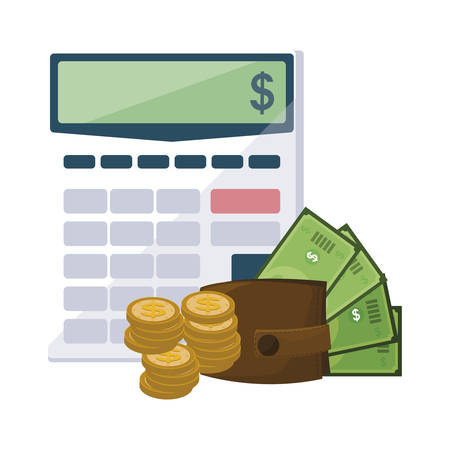What Are Donor-Advised Funds (DAFs)?
Donor-Advised Funds (DAFs) are a popular and flexible way for individuals, families, and businesses to support charitable causes while optimizing their tax benefits. A DAF is essentially a charitable investment account that allows donors to contribute assets, receive an immediate tax deduction, and recommend grants to qualified nonprofit organizations over time.
How Do Donor-Advised Funds Work?
DAFs operate through a simple three-step process:
- Contribute Assets: Donors transfer cash, stocks, real estate, or other assets into a donor-advised fund managed by a sponsoring organization.
- Receive Tax Benefits: Donors can take an immediate tax deduction in the year they make the contribution, even if they distribute funds to charities later.
- Recommend Grants: Over time, donors can recommend grants to eligible charities of their choice while the remaining funds have the potential to grow tax-free.
Why Are DAFs Popular for Charitable Giving?
Donor-advised funds offer several advantages that make them an attractive option for philanthropists:
| Benefit | Description |
|---|---|
| Immediate Tax Deduction | Donors can claim a tax deduction in the year they contribute assets to their DAF. |
| Tax-Free Investment Growth | The assets in a DAF can be invested and grow tax-free until they are granted to charities. |
| Simplified Giving | A DAF consolidates charitable giving into one account, making it easier to manage multiple donations. |
| Anonymity Option | Donors can choose to remain anonymous when recommending grants to charities. |
| Legacy Planning | A DAF allows donors to involve family members in philanthropy and create a lasting charitable legacy. |
Who Can Benefit from Using a DAF?
DAFs are suitable for various types of donors, including:
- Individuals and Families: Those looking for a structured approach to charitable giving with potential tax advantages.
- Business Owners: Companies seeking corporate social responsibility (CSR) initiatives while benefiting from tax deductions.
- Investors with Appreciated Assets: People holding stocks or other investments that have gained value can donate them directly to avoid capital gains taxes.
- High-Income Earners: Those looking for ways to offset taxable income with charitable contributions.
Getting Started with a Donor-Advised Fund
If youre considering opening a donor-advised fund, here are some key steps:
- Select a Sponsoring Organization: Choose from community foundations, financial institutions, or nonprofit organizations that offer DAF accounts.
- Fund Your Account: Contribute cash or appreciated assets such as stocks or real estate.
- Create a Giving Strategy: Decide how you want to distribute grants over time to support your preferred causes.
- Monitor and Adjust Investments: Many DAF providers allow you to invest your contributions so they can grow before being donated.
A donor-advised fund offers flexibility and control over your philanthropic efforts while maximizing tax benefits. By understanding how they work and who can benefit from them, you can determine if a DAF is the right tool for your charitable giving strategy.
2. Tax Benefits of Donor-Advised Funds
Donor-Advised Funds (DAFs) offer a range of tax benefits that can help maximize your charitable giving while optimizing your financial strategy. These advantages include immediate tax deductions, capital gains tax avoidance, and estate planning benefits.
Immediate Tax Deductions
When you contribute to a Donor-Advised Fund, you are eligible for an immediate tax deduction in the year the donation is made. This allows you to reduce your taxable income while deciding how to distribute the funds to charities over time.
Deduction Limits Based on Asset Type
| Type of Donation | Deduction Limit (% of AGI) |
|---|---|
| Cash Contributions | Up to 60% |
| Publicly Traded Securities | Up to 30% |
| Private Business Interests & Real Estate | Up to 30% |
Avoiding Capital Gains Taxes
If you donate appreciated assets such as stocks or real estate directly to a DAF instead of selling them first, you can avoid paying capital gains taxes. This means more money goes toward charitable causes rather than taxes.
How Capital Gains Tax Avoidance Works
- You contribute appreciated assets directly to a DAF.
- You receive a tax deduction based on the fair market value of the asset.
- The DAF sells the asset without incurring capital gains taxes.
- More funds remain available for charitable grants.
Estate Planning Benefits
A Donor-Advised Fund can be a strategic tool for estate planning, helping reduce estate tax liability while creating a lasting philanthropic legacy.
Key Estate Planning Advantages
- Assets donated to a DAF are removed from your taxable estate.
- You can involve family members in managing the fund as successors.
- It allows you to support charities beyond your lifetime.
The combination of immediate deductions, capital gains tax savings, and estate planning benefits makes Donor-Advised Funds an effective way to enhance both your charitable impact and financial strategy.

3. How to Set Up and Contribute to a DAF
Setting up a Donor-Advised Fund (DAF) is a straightforward process that allows you to streamline your charitable giving while maximizing tax benefits. Here’s a step-by-step guide on how to choose a sponsoring organization, fund your DAF, and make contributions.
Choosing a Sponsoring Organization
A DAF must be established with a qualified sponsoring organization, which can be a public charity, community foundation, or financial institution. Consider the following factors when selecting the right one:
| Factor | Considerations |
|---|---|
| Fees | Compare administrative fees and investment management costs. |
| Investment Options | Check the variety of investment portfolios available for growing your contributions. |
| Minimum Contribution | Sponsoring organizations may have different minimum initial contribution requirements. |
| Payout Flexibility | Ensure the organization allows flexible grant-making options to charities of your choice. |
| User Experience | A user-friendly online platform can simplify fund management and donation processes. |
Funding Your DAF
You can contribute various types of assets to your DAF. The most common forms of donations include:
- Cash: Simple and straightforward, cash donations offer immediate tax deductions.
- Publicly Traded Securities: Donating appreciated stocks or mutual funds helps avoid capital gains taxes while maximizing deductions.
- Real Estate & Private Assets: Some organizations accept real estate, private business interests, or even cryptocurrency.
- Retirement Assets: You can donate IRA assets or other retirement funds, often with tax advantages.
- Tangible Personal Property: In some cases, valuable collectibles or art may be accepted by select DAF sponsors.
The Contribution Process
(1) Open an Account
Select a sponsoring organization and complete their application process. This usually involves providing personal details and agreeing to terms of use.
(2) Make Your Initial Contribution
You’ll need to fund your DAF with an initial donation. Be sure to check the minimum required amount set by the sponsoring organization.
(3) Select Investment Options
Your contribution can be invested in various portfolios offered by the sponsor. Choose an option that aligns with your financial goals and risk tolerance.
(4) Manage Future Contributions
You can continue adding funds over time. Contributions are typically tax-deductible in the year they are made, allowing for ongoing tax planning benefits.
A well-managed DAF enables you to support charities effectively while optimizing tax advantages. By carefully selecting a sponsoring organization and funding method, you can maximize both your philanthropic impact and financial benefits.
4. Making Grants from Your DAF
Once you have contributed to your Donor-Advised Fund (DAF), the next step is distributing grants to charitable organizations. Thoughtful grantmaking ensures that your donations create a meaningful impact while also aligning with your philanthropic goals.
How to Select Charitable Organizations
Choosing the right nonprofit organizations to support is an essential part of making grants from your DAF. Here are key factors to consider:
(1) Verify Tax-Exempt Status
Ensure that the organization is a qualified 501(c)(3) public charity under IRS regulations. Most DAF sponsors provide databases or search tools to help verify eligibility.
(2) Align with Your Philanthropic Goals
Select charities that match your values and causes you’re passionate about, whether its education, healthcare, environmental conservation, or social justice.
(3) Evaluate Financial Health and Transparency
Review the organization’s financial reports, annual statements, and ratings on platforms like Charity Navigator or GuideStar to ensure responsible use of funds.
(4) Consider Long-Term Impact
Look for nonprofits with measurable outcomes and sustainable programs rather than short-term aid efforts.
Best Practices for Distributing Funds
Strategic distribution of grants can maximize the effectiveness of your donations. Consider these best practices when allocating funds:
(1) Diversify Your Giving Portfolio
Instead of donating all funds to one organization, spread contributions across multiple charities working on related issues to broaden impact.
(2) Establish Recurring Grants
Sustained giving through recurring grants allows nonprofits to plan long-term projects with consistent funding rather than relying on one-time donations.
(3) Leverage Matching Gift Programs
If your employer offers matching gifts, coordinate your DAF grants with their program to double or triple the impact of your donation.
(4) Support Capacity-Building Initiatives
A portion of your grants can go toward helping nonprofits strengthen their infrastructure, leadership training, and operational efficiency for long-term success.
Strategies for Maximizing Philanthropic Impact
Your approach to grantmaking can enhance the overall impact of your philanthropic efforts. Here are strategies to consider:
| Strategy | Description |
|---|---|
| Pooled Giving | Join donor collaboratives or community foundations to combine resources and increase collective impact. |
| Multi-Year Commitments | Pledge multi-year grants to provide sustained support and stability for nonprofits tackling complex issues. |
| Missions-Aligned Investments | If permitted by your DAF sponsor, explore impact investing options that align with your charitable vision while growing funds. |
| Donor Engagement | Stay involved beyond financial contributions by volunteering, attending nonprofit events, or serving as an advisor. |
| Anonymity vs. Recognition | You can choose anonymous giving or public recognition depending on how you want to influence others’ philanthropy. |
The way you distribute grants from your DAF plays a critical role in supporting meaningful change. By selecting charities carefully, following best practices, and using strategic approaches, you can make a lasting difference in the causes you care about.
5. DAF Strategies for Long-Term Giving and Legacy Planning
Donor-Advised Funds (DAFs) offer a powerful way to support charitable causes over multiple years while also integrating philanthropy into family financial planning. By using a DAF strategically, you can ensure that your giving has a lasting impact while also optimizing tax benefits. Below are some key ways to use a DAF for multi-year giving, family philanthropy, and leaving a charitable legacy.
Multi-Year Giving Strategies
A DAF allows donors to plan their charitable contributions over several years, ensuring consistent support for their favorite causes. Here are some ways to structure multi-year giving:
- Annual Grant Commitments: Set up automatic or recurring grants from your DAF to provide steady funding to charities.
- Endowment-Style Giving: Grow your DAF balance through investments and distribute grants based on annual returns.
- Matching Gift Programs: Use your DAF to match donations from employees, family members, or other donors.
Incorporating Family Philanthropy
A DAF is an excellent tool for involving family members in charitable giving and teaching younger generations about philanthropy. Some effective approaches include:
| Strategy | Description |
|---|---|
| Family Giving Meetings | Hold regular discussions about which charities to support and why. |
| Successor Advisors | Name children or grandchildren as successor advisors to continue the familys philanthropic efforts. |
| Thematic Giving | Select specific causes that align with family values and commit ongoing support through the DAF. |
Leaving a Lasting Charitable Legacy
A well-structured DAF can serve as part of your estate planning, ensuring that your charitable giving continues beyond your lifetime. Consider these legacy planning strategies:
(1) Naming a Charity as a Beneficiary
You can designate one or multiple charities as beneficiaries of your DAF so that remaining funds go directly to them after your passing.
(2) Establishing a Perpetual Fund
If you want your philanthropic efforts to last indefinitely, you can structure your DAF to distribute only investment earnings while keeping the principal intact.
(3) Combining a DAF with Other Estate Planning Tools
A DAF can be used alongside wills, trusts, or charitable remainder trusts (CRTs) to maximize impact and tax advantages for heirs.


